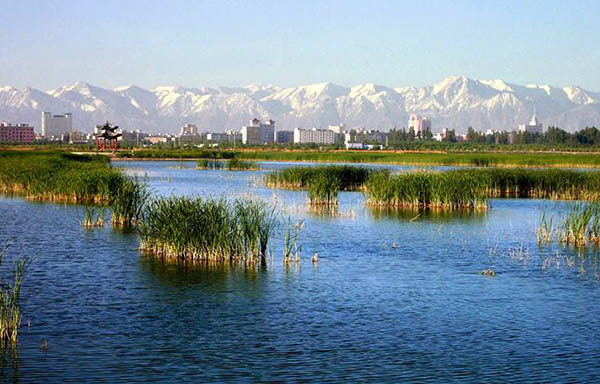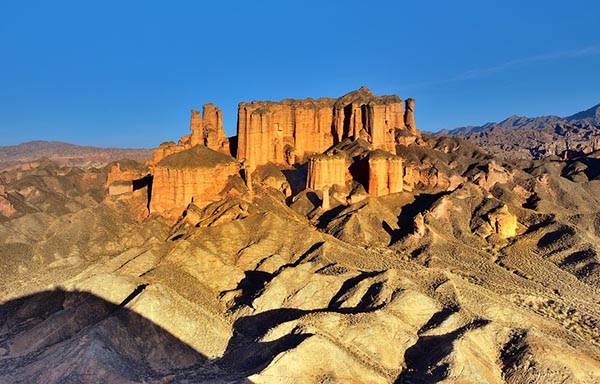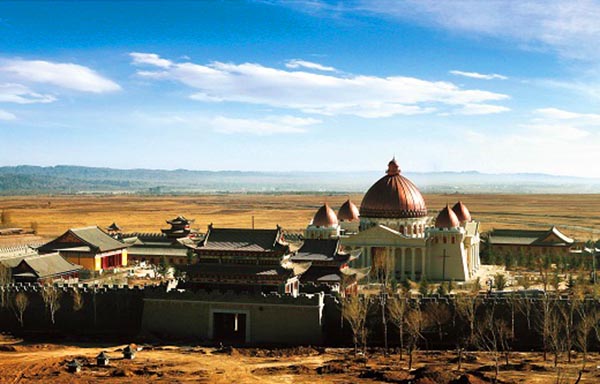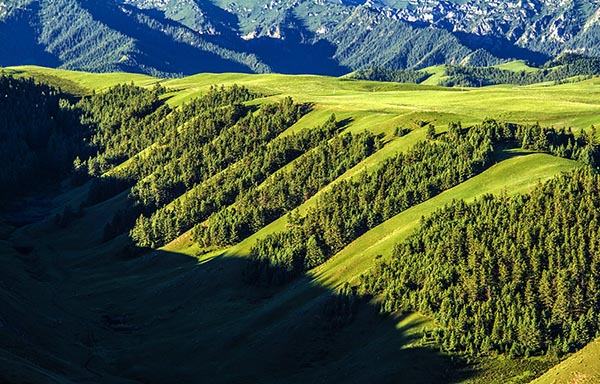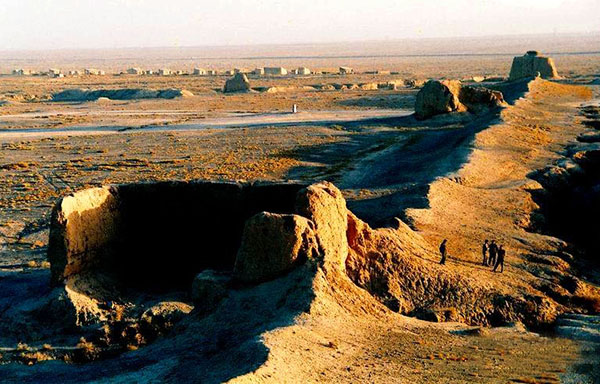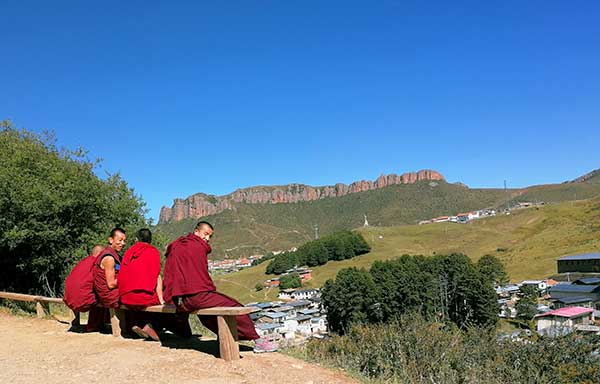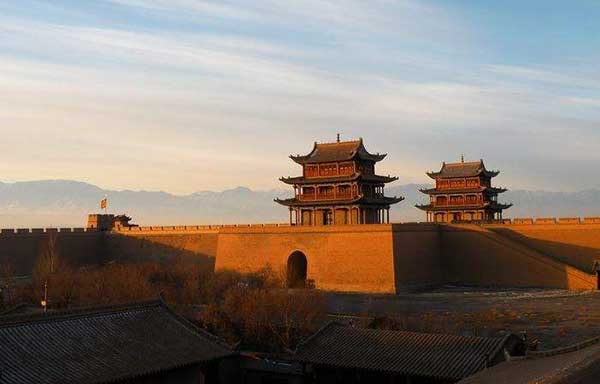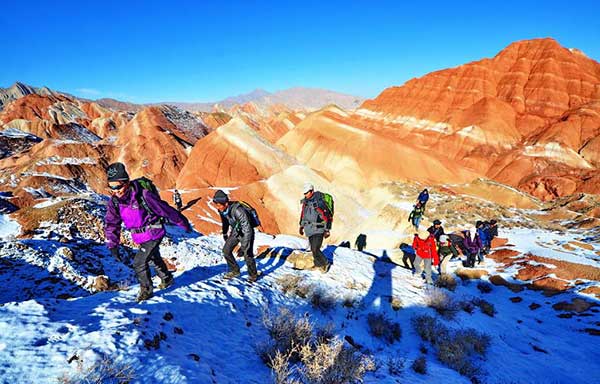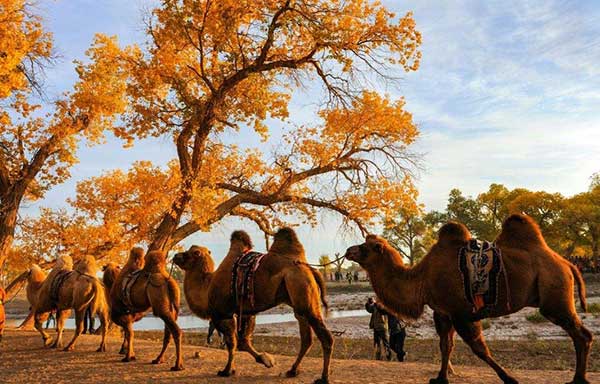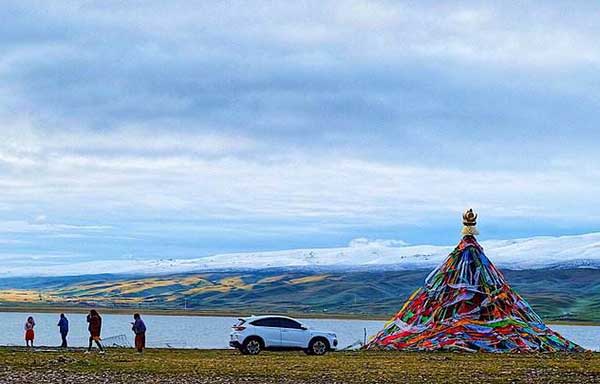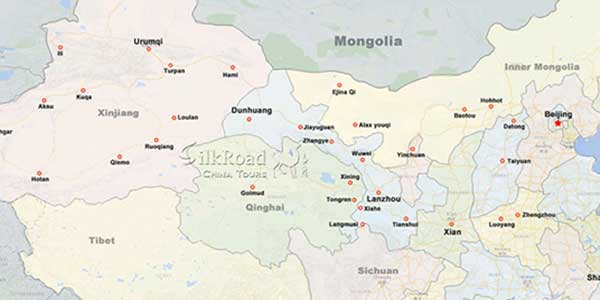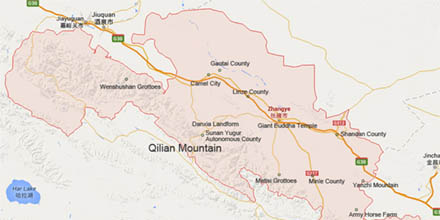 Giant Buddha Temple is located in Zhangye, Gansu Province. Zhangye is a historic city in the midway in the Hexi Corridor along the Silk Road. The Giant Buddha Temple is the centerpiece of the city. The Giant Buddha Temple is the largest architectural relic in Gansu Province of the Western Xia (1038-1227) period. It was built in 1098 and restored for several times in Ming and Qing Dynasties.
Giant Buddha Temple is located in Zhangye, Gansu Province. Zhangye is a historic city in the midway in the Hexi Corridor along the Silk Road. The Giant Buddha Temple is the centerpiece of the city. The Giant Buddha Temple is the largest architectural relic in Gansu Province of the Western Xia (1038-1227) period. It was built in 1098 and restored for several times in Ming and Qing Dynasties.
The temple complex consists of the Giant Buddha Hall, the Buddhist Classics Hall, and a Clay Pagoda. The gold-plated and painted Giant Buddha lies in the middle of the Giant Buddha hall. The whole Buddha is 34.5 meters long and 7.5 meters wide between its two shoulders, with feet of 4 meters and ears of 2 meters. It is the largest reclining Buddha in China. Its calm expression and gentle lines make a deeply impression of visitors. Behind the Buddha are ten disciples, and in two side halls stand 18 Saintly Warriors. Colorful murals are hanging against the walls of the hall, which depict episodes in the Mountain-sea Sutra (an ancient Chinese encyclopedia) and the Journey to the West (a celebrated novel written in the Ming Dynasty).
More than 6000 tomes of lectures are stored in the Buddhist Classics Hall, some of them were written in gold and silver. The four miniature pagodas in the Clay Pagoda are also rarely seen in other pagodas.
The Italian traveler Marco Polo, attracted by the magnificent architecture of the Giant Buddha Temple and the prosperity of Zhangye city, lived here for more than a year.
Gallery
Attractions in the area
Related Tours
General Information
Alias: Dafosi Temple
Loc: in the city center
Entrance: 41 RMB
Open Time: 8:30 - 5:30
Relevant blogs
-
How did the name of Tianshui in Gansu come about?
The name Tianshui is very pleasant to the ear, and it reminds one of that exquisitely beautiful verse, "After getting drunk, one doesn't know if the sky is in
-
The 8th Silk Road Hotel Festival was successfully held i
On December 27th, the "8th Silk Road Hotel Festival" grandly opened at the Yujing International Hotel in Zhangye. This hotel festival gathered industry experts,
-
The Karez Irrigation System in Turpan has been selected
On September 3rd, at the 75th Executive Council Meeting of the International Commission on Irrigation and Drainage held in Sydney, Australia, the 2024 (11th bat
-
What is the connection between "dragons" and "snakes
In traditional Chinese culture, the snake has a dual identity of auspiciousness and danger. Ancient people believed that the snake not only possesses divine cha
-
Endangered Przewalski's Horses Spotted at Dunhuang Yume
<p>In early February, a group of special "visitors"—the Przewalski's horses—appeared at the Dunhuang Yumen Pass scenic area in Gansu Province, a U
-
The Fourth Dunhuang Cultural Tourism Supplier Conference
On the morning of February 18th, the Fourth Dunhuang Cultural Tourism Supplier Conference in Northwest China commenced at the Dunhuang International Convention







